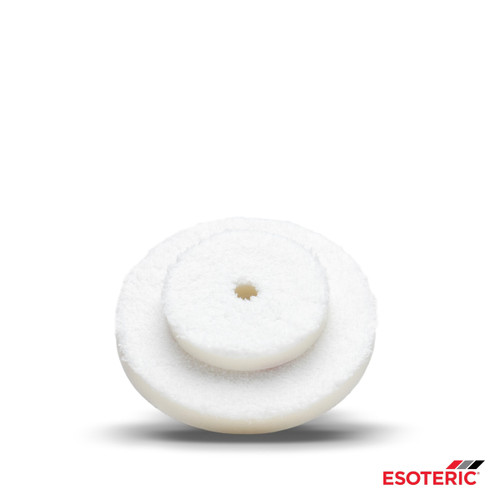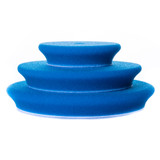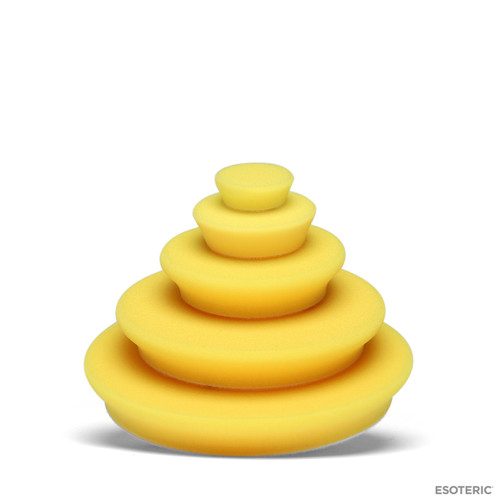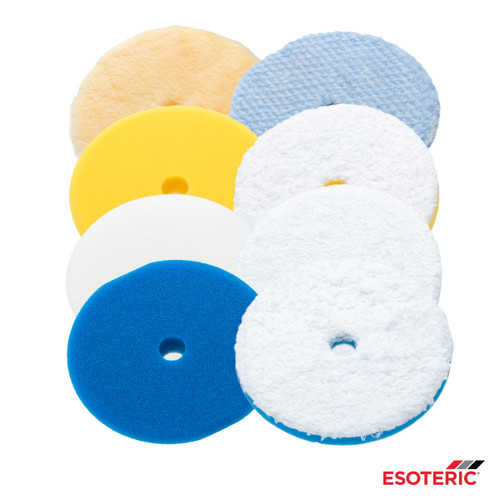Rupes DA Fine Microfiber Polishing Pad
Don’t get confused by the naming of this pad…it is designed for heavier defect removal, and therefore will be used more than any of the microfiber pads in the Rupes lineup!
In our testing, we have found the DA FINE Microfiber Polishing Pad to be at least equal with the Meguiar’s Cutting Disc that has been the standard in the industry for over a decade now. Designed for use with the Dual-Action (DA) polishers, these new microfiber pads are known for their incredible cut during the compounding stage, with the ability to create a really fine finish that requires just one fine polishing stage afterwards. The DA FINE Microfiber Polishing Pads is easily distinguished by its yellow foam core that is quite flexible, and works well with contours.
Regardless of whether you’re correcting modern clear coat (either hard or soft), or older single stage paint, the Rupes DA FINE Microfiber Polishing Pad is the perfect choice for your initial cut to remove scratches, sanding marks, swirls, and holograms. For your follow-up / secondary polishing process afterwards, we recommend using the Rupes Yellow Foam Polishing Pads with either Rupes DA Fine Polish, or Sonax Perfect Finish.
For best results, team with a high quality compound like the Rupes DA Coarse Compound, or Jescar Correcting Compound. Set the speed on your Rupes Bigfoot polisher to 4.5, apply 3 pea-sized drops of compound, and keep your working area small (roughly shoulder-width, by equal height). Using medium pressure, work 2 sets left and right with 2 sets up and down, overlapping each pass.
On a normal sized car, expect to use about 6-8, 5" pads, and about the same amount of 3” pads to achieve best results. At the end of the day fully clean out the pad with water and an All-Purpose Cleaner (APC). Work with a light brush until water rinses out clear. Spin-out as much water in the pad as you can by attaching the pad to the machine, put the head of the machine into a bucket, and then turn it on. Once most of the water is out, place the pads (preferably) on a wire rack in a clean environment so it can fully dry before storing away for next use.



















